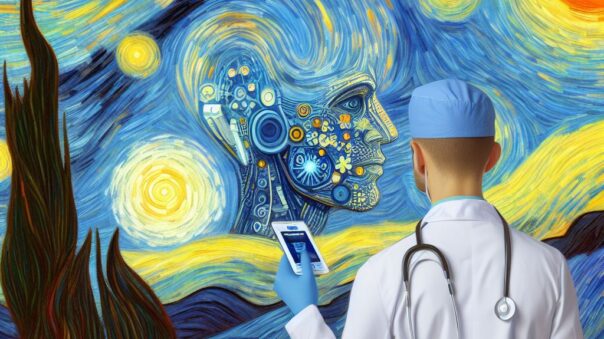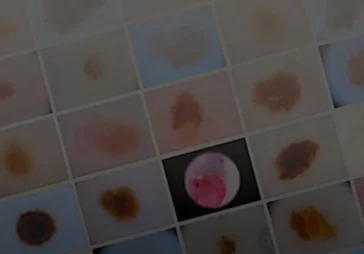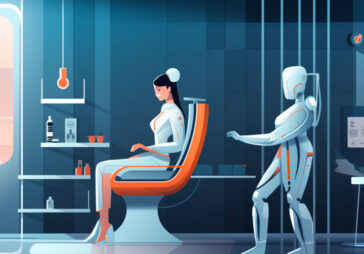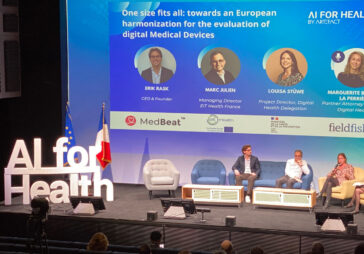As we approach the close of 2023, healthcare continues to embrace the digital realm, with the terms Digital Health Innovation and Mhealth still at the forefront. Rather than simply referring to healthcare enabled by emerging technologies like mobile phones, 5G, satellites, data, and artificial intelligence, we increasingly view these digital innovations as integral components of healthcare systems. With growing adoption and integration, these trends are poised to reshape the landscape of Health Innovation in the near future.
Here are seven key trends that warrant close attention and tracking in the coming year:
1. Artificial Intelligence and Generative AI
The past year has witnessed remarkable strides in artificial intelligence, including the development of large language models and generative AI, exemplified by tools like ChatGPT. These technologies are now being harnessed to create chatbots and virtual assistants that offer assistance throughout the patient journey. The potential applications of generative AI in healthcare are nearly boundless, and we’ll delve into this further in our exploration of other trends. Notably, AI is already making an impact in healthcare, as seen with platforms like Skinive, which employs AI in dermatology and cosmetology for skin health analysis.
2. Access to Health Data
Major transformations are on the horizon for researchers and companies, whether they’re startups or global enterprises. The European Health Data Space is on the brink of completing its legislative journey, bringing us closer to the day when health data from multiple Member States can be accessed for secondary uses, such as research and innovation, particularly in the realm of AI-enabled advancements. The availability of extensive medical data is vital for driving innovation in healthcare.
3. Digital Twins
Digital twins represent virtual models of real-world systems, objects, places, tools, or processes. They enable simulations of everything from individual medical devices to entire hospitals, shedding light on how they function in various scenarios. Digital twins of the human body and specific organs are now in development, allowing us to simulate the effects of treatment, medication, and lifestyle choices. The pinnacle of this concept is the human brain twin, which researchers aim to advance by 2024.
4. Healthy Aging
The B2C market for healthy aging is gaining prominence, with companies like SAGA conducting intriguing research into how different generations perceive and experience aging. Before the age of 75, most adults report feeling younger than their actual age. However, as individuals cross this threshold, the perceived age and actual age become closer, leading to reduced activity levels. SAGA envisions a future marked by a “full” life – one that is longer, healthier, and more fulfilling for older adults. Digital tools and solutions are playing a crucial role in enabling people to remain active, healthy, and content, especially within the B2C market.
5. Telemedicine 2.0 and IoT-based Virtual Hospitals
This trend encompasses both telemedicine and wearable devices connected to the Internet of Things (IoT). By utilizing connected devices for remote patient monitoring and facilitating communication channels for healthcare professionals, a broader range of care services can be provided remotely. Dubbed “Telemedicine 2.0,” this approach goes beyond remote consultations, offering a holistic perspective on remote patient care and treatment. Virtual hospital rooms, set to become more prominent in 2024, serve as hubs for monitoring multiple patients in their own homes.
6. Virtual and Augmented Reality in Healthcare
The integration of virtual reality (VR) into healthcare is gaining traction, with innovative use cases becoming mainstream. VR has proven effective in assisting patients in managing chronic pain, often with fewer side effects than traditional pharmaceutical treatments. Surgeons are increasingly using augmented reality (AR) to access digital information during procedures, eliminating the need for separate screens. In wound care, AR facilitates non-invasive assessments of wound severity, healing progress, and the most suitable treatment options.
7. 3D Printing – From Tools to Organs
Additive manufacturing, exemplified by 3D printing, is revolutionizing healthcare. In regions where medical equipment is scarce, it enables on-demand production of tools and devices, including surgical instruments, orthopedic or dental implants, and prosthetics. Research is also underway to explore the feasibility of 3D printed organs for transplantation using the patient’s own biological tissue. If successful, this could address the persistent shortage of organs available for transplant and significantly reduce associated costs.
In conclusion, the digital health landscape is evolving rapidly, and these seven trends are poised to have a profound impact on the healthcare industry. As we look ahead to 2024, the convergence of technology and healthcare promises exciting developments that can enhance patient care, improve access to medical data, and revolutionize the aging experience. These innovations, ranging from AI and digital twins to telemedicine and 3D printing, offer a glimpse of a brighter and more efficient future for healthcare.










